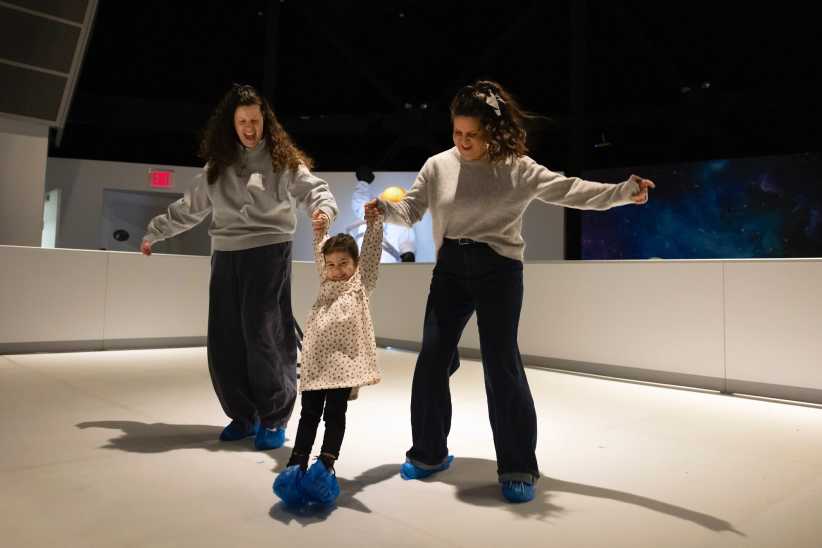
Located in the upcoming family-friendly neighborhood of Carroll Gardens, Brooklyn, Pazzi Pasta is a great destination for a fun, laidback (yet still yummy and healthy) family dinner, or for a cooking class or child’s birthday party. In addition to a commitment to cooking traditional Southern Italian food with modern flavor twists and a focus on cooking with ancient grains, Pazzi Pasta also feels strongly about maintaining an atmosphere that makes it easy and convenient for customers of all ages–whether they’re grabbing dinner quickly on the go or stopping in for a longer meal–to enjoy quality food.
The restaurant is also family-owned by the Campanile family: Husband-and-wife team Dr. Giovanni Campanile, one of the nation’s top cardiologists and director of the Dr. Dean Ornish Heart Disease Reversal Program that focuses on nutrition and lifestyle modification; and Dr. Sandra Cammarata join up with their children Dan (the restuarant’s manager) and Francesca Campanile (the restaurant’s pasta maker) to offer wholesome pasta dishes made not only with ancient grains, but also with locally-grown produce. Inspired by the family’s Italian heritage and in particular by Sandra’s mother, a gourmet chef in Italy, Pazzi Pasta gives guests an interactive, healthy, family-friendly experience, all served at a New York pace.
To learn more about Pazzi Pasta and what they’re all about, we caught up with their manager Dan Campanile!
What is the core mission of Pazzi Pasta?
Our core mission is to serve really tasty pasta and really healthy food at affordable prices. Instead of regular, bleached, over-processed double zero flour, we specialize in using flours made from ancient grains and infused pastas and organic flours. We make our artisanal pasta from scratch every day, and then customers mix and match it with our gourmet sauces and toppings, according to their preferences. We take some of the healthiest traditions from the Mediterranean region and serve those dishes here in New York at affordable prices.
How did you choose name Pazzi Pasta?
“Pazzi” is the Italian word for “crazy,” meaning “passionately fond of, out of the ordinary, and obsessed with.” Here at Pazzi Pasta, we are obsessed with the quality, taste, and heritage of our food. We were always a very picky family, and we almost never ate out, because our options were so limited. To have something that would be acceptable to us, especially in Italian food, with our pickiness, and especially if we just wanted to affordably grab something and go–not having to sit down for the full experience–was tricky to find. That concept is something we are trying here.
Are the recipes on the menu all family recipes?
The recipes we use are a mix of old standard recipes from Southern Italy and some farmhouse and agro-tourism recipes that we discovered around the Italian countryside. We are a home restaurant and many of the recipes are very simple: It could just be a slow-cooked piece of meat. For the beef shoulder, we slow cook it for six hours. It pulverizes and becomes mushier than pulled pork, which is basically a sauce by itself. My mother invented the smoked salmon Gorgonzola sauce, one of our most popular, herself. I tell people who don’t eat bacon that they must try this sauce. We sear the smoked salmon in a pan and then mix it with the Gorgonzola for a deep, rich, umami flavor. We also have traditional, old-style sauces.

Which of your dishes are the most popular?
Our ancient grains are becoming more popular, which was what we were setting out to do when we started the restaurant. We use a lot of farro (spelt), and we have a relationship with the first importers of kamut. Kamut has a nutritional profile similar to quinoa, with a full array of amino acids. Because it is a complete protein, vegans and vegetarians love it. It is also the one that I eat the most of, and I love the nutty flavor. We are also moving into using einkorn wheat, and hoping to expand into using all of the ancient grains, including barley. Our grass-fed bolognaise is super popular for traditional sauce choices. For less standard choices, the cuttlefish ink sauce is popular, as well as the salmon Gorgonzola sauce, a really unique umami experience.
Pazzi Pasta offers cooking classes and birthday party options. Tell us more!
It has always been part of our mission for families to bring their kids to our restaurant to have a really positive experience. My wife and her mother are in charge of the birthday parties [and] kids programs… In the restaurant, we have a kids’ corner where the kids can eat, play games, and draw. Kids just like it here! I have seen them throw tantrums outside on the sidewalk to get some of our pasta. The first week we opened, I saw a kid admiring he sausages displayed like ice cream in a steam table outside, where customers can also taste them. He came right up to the glass and said: “This is my kind of restaurant.” When we have birthday parties, they are station based. Every station has an activity like roll the dough, process the dough, a see who can make the longest spaghetti competition, an area to learn about the grains and where they come from, and a science station where we discuss why we use eggs and why we use water. We just hosted a home-schooled group and my mother gave a full class, which including the science angle and the practical pasta making angle. It was a really nice thing that I hope to do more of in the future, because the education aspect is very important to us. It is all about simple food: what it is, where to find it, and how to cook it.
To learn more about Pazzi Pasta, and their birthday parties and cooking classes, visit pazzipasta.com!













